Avalon
Peninula
Aug. 16-18, 2012
Heading further south, we followed the Irish Loop Trail around the
southern part of the Avalon Peninsula, which is this part of
Newfoundland. This part of Newfoundland was settled largely by the
Irish, which you can still hear very easily in their accent.

An old, and no longer used, bridge, but it is still picturesque.
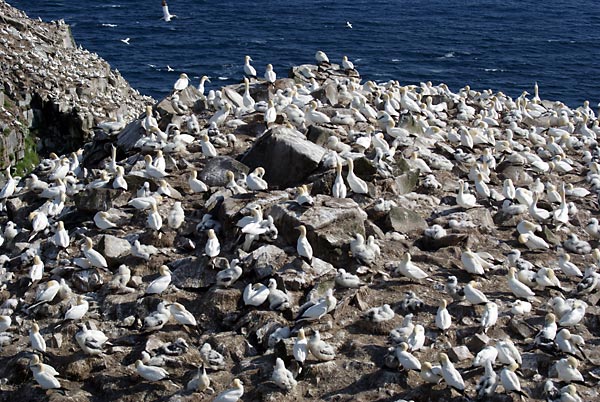
In the southwestern corner of the Avalon Peninsula is the Cape St. Mary
Ecological Reserve, which is the third largest nesting site for
northern gannets in Canada. After a one-mile hike from the visitor
center, we came to a cliff where we could look down on thousands of
gannets nesting on a rock about 50 feet away. It was very impressive.

A telephoto shot of the gannets nesting. I guess you could call this
"high density public housing". The baby chicks are still covered in
down. In October, the gannets will migrate south to sites along the
eastern coast of the U.S., with some gannets going as far south as the
Caribbean.
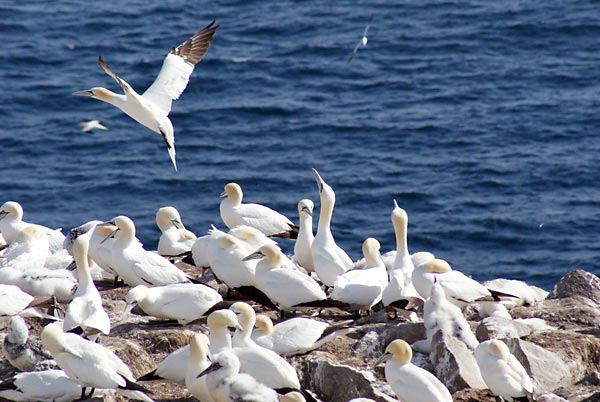
The gannets are all white, except for the light golden head and the
black wing tips. An adult gannet has a wingspan of about six feet.

A still working lighthouse at Cape St. Mary.
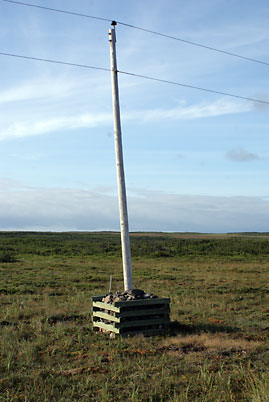
Telephone
poles in this area are held erect by boxes filled with rocks. This is
an indication that there is bedrock very close to the surface, making
it difficult to drill a hole to set the pole into the ground. We see
the same thing in northern Ontario, where the bedrock granite, called
the Canadian Shield, is just below the surface.
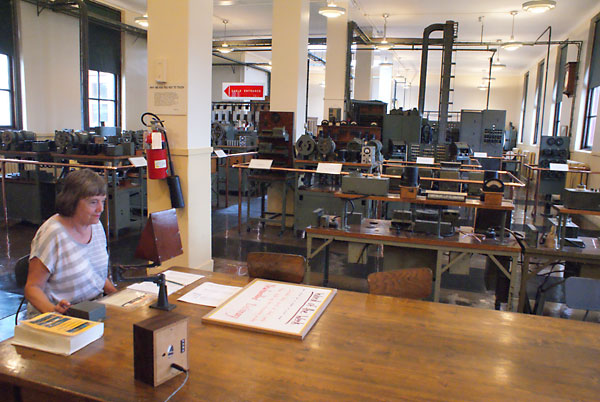
After
Cape St. Mary we headed for Heart's Content, which is in the northern
part of the Avalon Peninsula. Heart's Content is where the first
successful transatlantic cable came ashore. The cable station there was
in operation from 1866 to 1965, and is now a historic site (shown
here). Pat is practicing her Morse code.
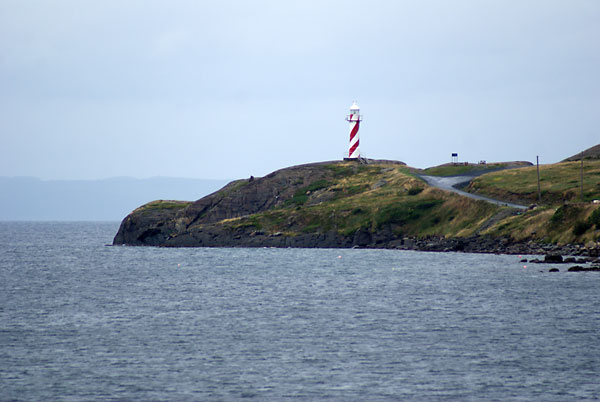
The lighthouse in Heart's Content. I call this the "Candy Cane lighthouse", becuase of the way it is painted.
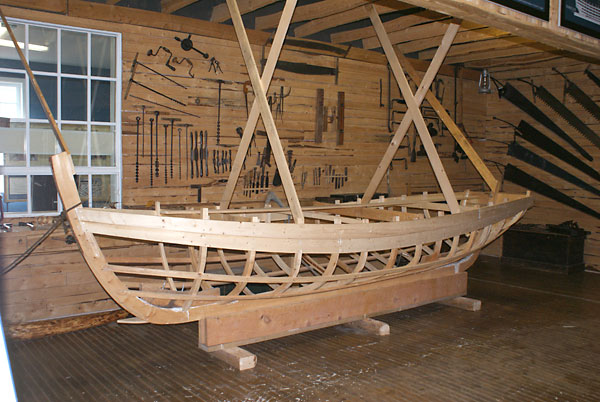
The
wooden boat museum in Winterton traces the development of wooden boats
from the early kayaks to modern day boats, with an emphasis on boats
used by Newfoundlander fishermen. It seems that boat building was a
skill passed on from one generation to the next, but is dying out with
the advent of fiberglas and kevlar boats made in factories. The museum
is attempting to preserve this knowledge. I found this museum very
interesting, but it is probably a "guy thing".
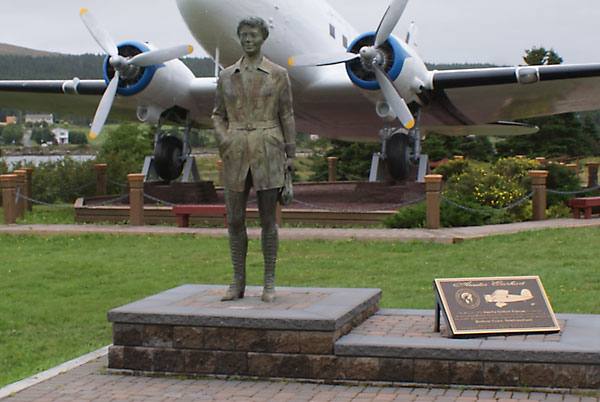
A
statue of Amelia Earhart in Harbor Grace. She was the first woman to
fly solo across the Atlantic Ocean. Shetook off from Harbor Grace in
1932 and landed in Ireland. The plane in the background is a DC-3, not
the plane she flew, which was a single engine Lockheed Vega.
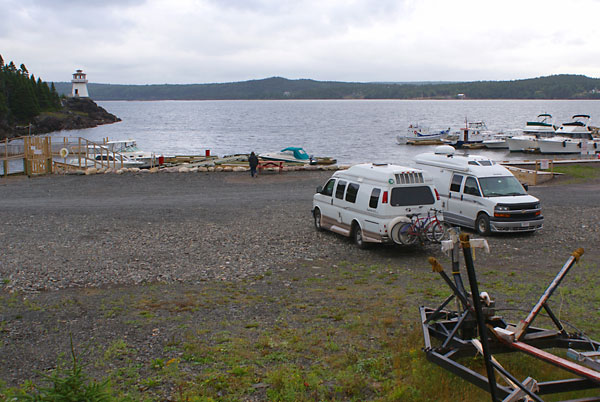
One of our more picturesque boondocking places. This was the Deep Cove Marina in Musgravetown.










